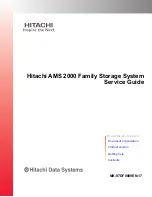
D-2
SunLink SNA 9.1 PU2.1 Server Configuration Guide—August 1997
D
A Token Ring operation does not have the frame collision problem that exists
in Carrier Sense Multiple Access with Collision Detect (CSMA/CD) networks
such as Ethernet or Institute of Electrical and Electronics Engineers (IEEE)
Standard 802.3. The frame collision problem results from two or more stations
attempting to transmit to the network simultaneously. Because only one station
has access to the token at any given point in time, a Token Ring network
exhibits more deterministic operation.
Note that more than one station can have data on the ring at the same time
(newer versions of the IBM Token Ring network allow multiple frames to be
present on the ring at the same time). However, access to the free token is still
mutually exclusive. In addition, safeguards on an IBM Token Ring network
ensure that data frames do not circle the ring indefinitely and that all stations
on the network are uniquely addressable.
Many of functions and features of the IBM Token Ring network are
implemented as part of the network interface, or Token Ring adapter, chipset.
This chipset is the hardware responsible for interfacing to the Token Ring. Its
functions and features help to maintain the integrity and ensure smooth
operation of the IBM Token Ring network and are described as follows:
•
The Active Monitor performs duties such as token monitoring and ring
clocking. These duties include removing frames that circle the ring
indefinitely and lowering the priority of a free token if the station that
released the token fails to do so.
•
The Standby Monitor acts as a backup in the event of a failure of the Active
Monitor.
•
The Ring Error Monitor (REM) collects various types of errors that occur on
the Token Ring. These errors include hard errors, which may indicate ring
and station failures, or soft errors, which do not affect the overall integrity
of the network.
•
The Ring Parameter Server (RPS) provides initialization values to stations
that insert into the Token Ring.
•
The Configuration Report Server (CRS) can be used with higher-level LAN
management functions to request status information from stations on the
Token Ring.
For more details on the capabilities of the Token Ring adapter chipset and the
functions provided by the various servers, refer to the appropriate
documentation.
Содержание SunLink SNA 9.1 PU2.1
Страница 14: ...xiv SunLink SNA 9 1 PU2 1 Server Configuration Guide August 1997...
Страница 16: ...xvi SunLink SNA 9 1 PU2 1 Server Configuration Guide August 1997...
Страница 18: ...xviii SunLink SNA 9 1 PU2 1 Server Configuration Guide August 1997...
Страница 26: ...xxvi SunLink SNA 9 1 PU2 1 Server Configuration Guide August 1997...
Страница 48: ...1 22 SunLink SNA 9 1 PU2 1 Server Configuration Guide August 1997 1...
Страница 66: ...2 18 SunLink SNA 9 1 PU2 1 Server Configuration Guide August 1997 2...
Страница 80: ...3 14 SunLink SNA 9 1 PU2 1 Server Configuration Guide August 1997 3...
Страница 110: ...6 12 SunLink SNA 9 1 PU2 1 Server Configuration Guide August 1997 6...
Страница 120: ...7 10 SunLink SNA 9 1 PU2 1 Server Configuration Guide August 1997 7...
Страница 132: ...8 12 SunLink SNA 9 1 PU2 1 Server Configuration Guide August 1997 8...
Страница 226: ...A 10 SunLink SNA 9 1 PU2 1 Server Configuration Guide August 1997 A...
Страница 282: ...F 16 SunLink SNA 9 1 PU2 1 Server Configuration Guide August 1997 F...
Страница 288: ...G 6 SunLink SNA 9 1 PU2 1 Server Configuration Guide August 1997 G...
















































